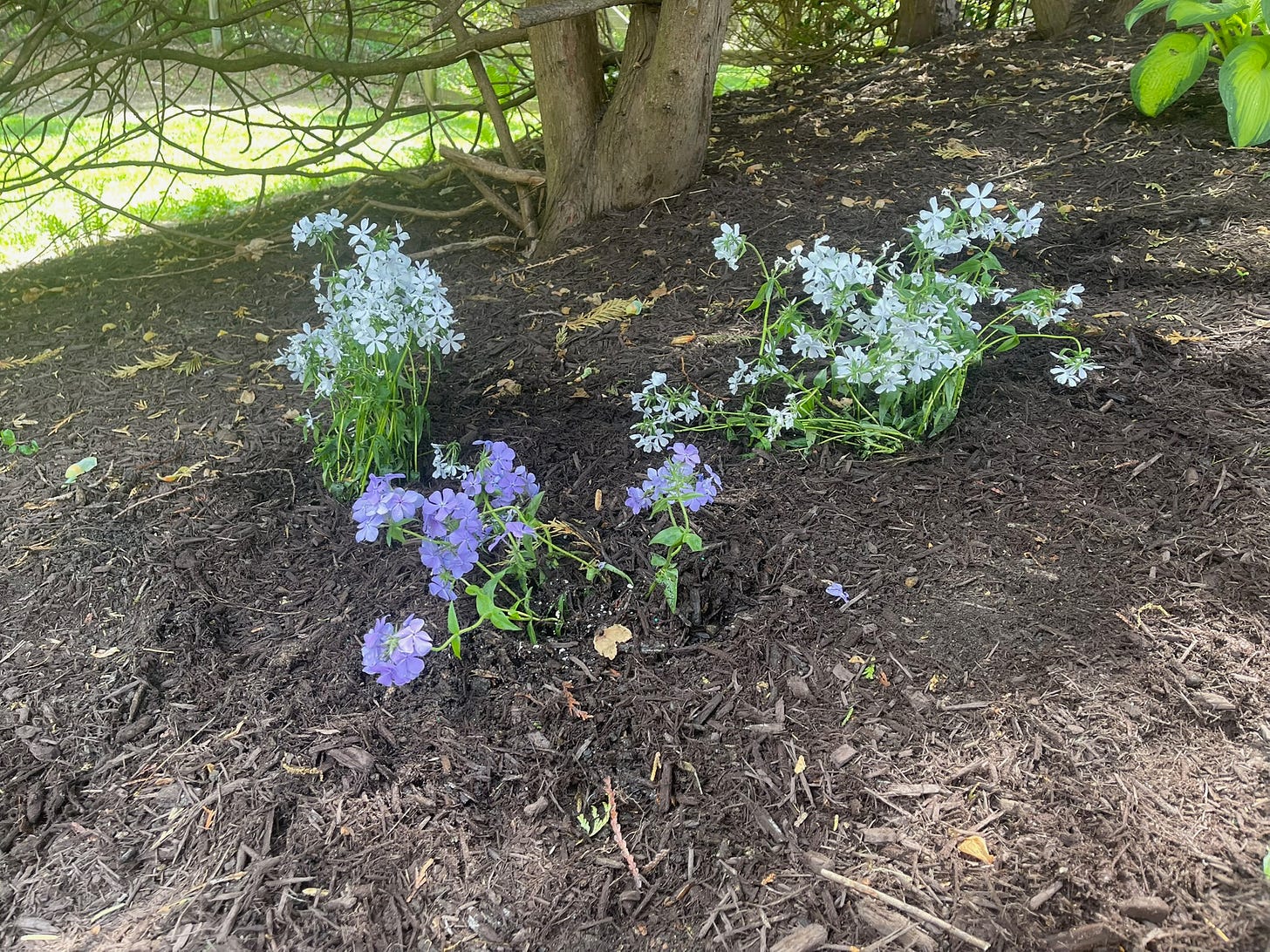I’ve Got Two Words for Ya
As you know, the high probability is that each of my posts will have a minimum of 1,300 words for you, give or take. But I have two particular words that I want to share this week. The words are Phlox and Grackle.
Let’s start with Grackle. Noun. (not a candy bar). A species of bird that is incredibly annoying. You may remember me complaining that I dutifully cleaned up my bird feeder and filled it with seed in preparation for my spring planting, only to have an aggressive flock of black birds wipe out all the seed in about three days. There was bird poop everywhere, and Linda and I agreed that bird feeding would cease until the nasty black birds disappeared. Last week my neighbors, Sam and Patty, explained that the birds are Grackles and that they, too, are not enjoying these visitors. According to Sam and Patty, the birds usually depart after their young have left the nest, often in late May. And so, I hope that I might get a chance to feed some beautiful songbirds as summer rolls around. I refuse to resort to feeder cages, spreading seed on the ground, or other Grackle-controlling techniques on Google. Two seasons ago little birds ate leaves off my Autumn Joy sedum, and this year Grackles ate all my seed and are a pain in the neck. Remind me again -- I like birds, right?
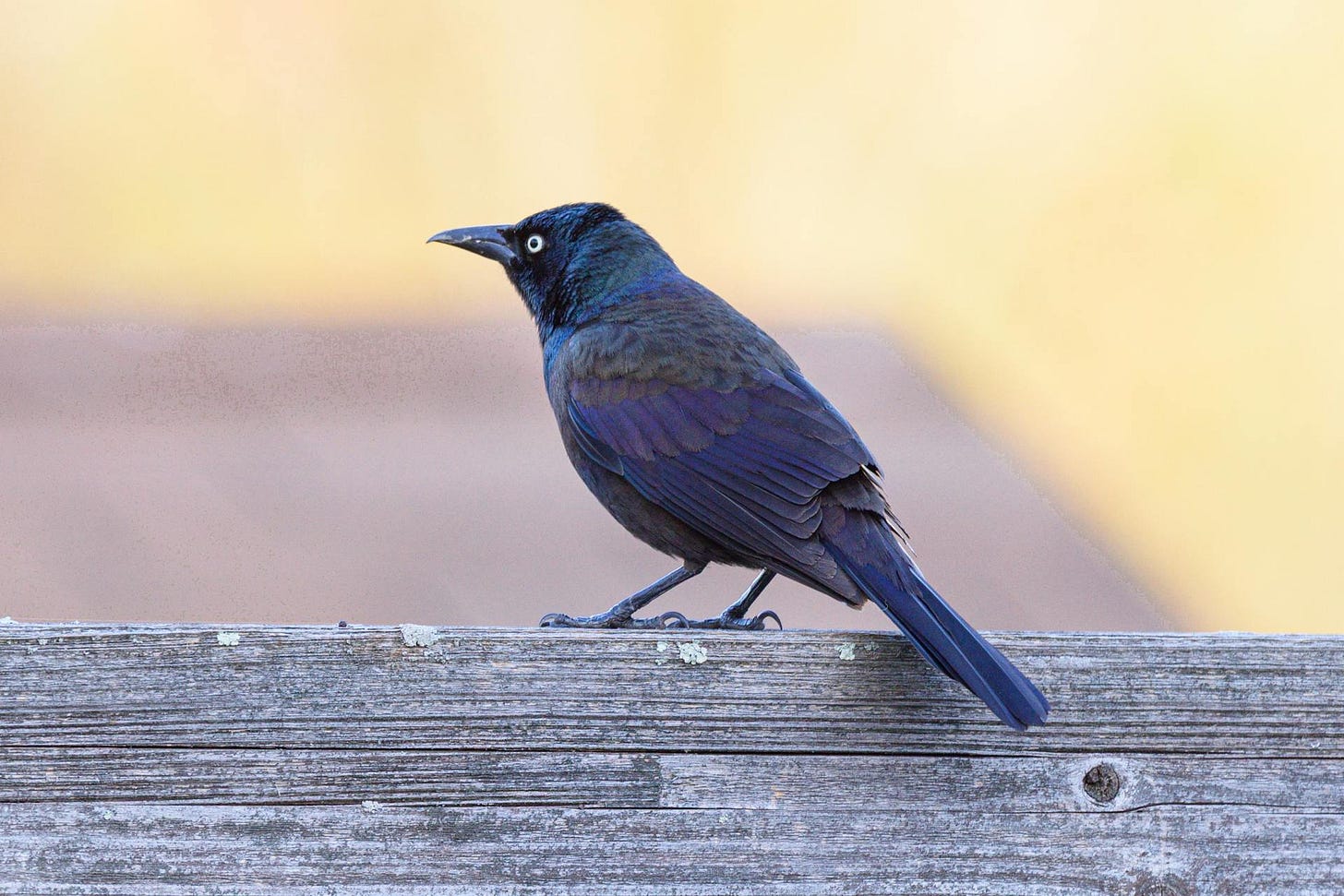
The second word is Phlox. Phlox is a very versatile perennial that comes in a variety of flavors. Unfortunately, trying to understand the different varieties of phlox is confusing, at least to me. There are three main types of phlox. Garden phlox, or Phlox paniculata, is a tall, (2-3 feet) sun-loving plant that is native, like all phlox, to the Eastern U.S. Next up is Creeping phlox, (Phlox subulata), also called moss phlox or moss pink, which is often used as a groundcover. As you might expect from the name, moss phlox plants produce low-growing mounds of dense flowers in the spring. Moss phlox thrives in full sun but can manage in partial shade. There is a third type of phlox, called Woodland phlox, (Phlox divaricata). On a recent visit to Sun Nurseries, I happened upon two different cultivars of Woodland phlox, Blue Moon and May Breeze. They both had pretty, delicate flowers. May Breeze, with white blooms, stood about 1 foot tall, and the blue/violet Blue Moon was sightly taller at about 18 inches. (Warning: The author is about to whine. I have this terrible ability to break the stems of plants when removing them from trays or flats at the nursery. The flowers catch on each other and the proud, tall plant in the tray always seems to look quite different by the time I’ve mangled it and placed it in the cart. But I digress.)
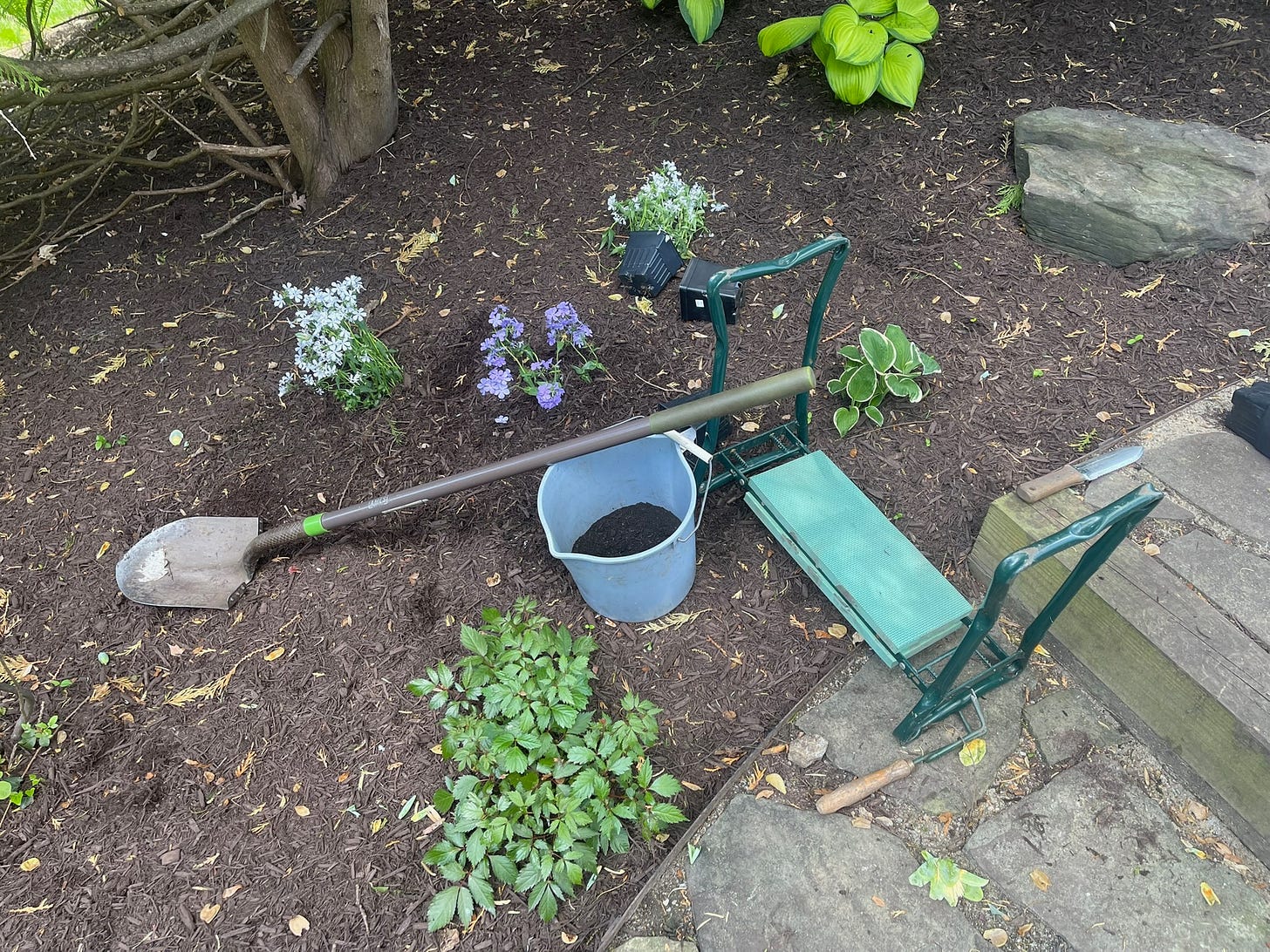
The most important characteristic of Woodland phlox is that it does great in shade or partial shade, which describes about 85% of my garden. I bought six plants at my first visit, and after planting them in the waterfall bed near the Japanese maple and realizing how gorgeous they looked against the dark mulch, I went back to Sun and bought three more plants for the steps bed. The east side of the waterfall bed gets strong morning sun and I’m hoping the location fits the bill for partial shade. The steps bed gets speckled shade to full shade most of the time, so hopefully the phlox will also do well there. Did I mention that phlox spreads through rhizomes (underground shoots) and through self-seeding? Either would be fine with me since I want to use this as a groundcover in both spaces. I mixed the purple Blue Moon with the white May Breeze cultivars. Hopefully that doesn’t result in some disastrous consequence that I’m blissfully unaware of.
I should note that this is the same location where I planted five lungwort (pulmonaria) plants last year. As I mentioned last week, I think those plants succumbed to powdery mildew and a tough winter. I love the look of lungwort, so I bought five more plants for the waterfall bed next to the phlox. Once again, I’m hoping that location will suit the shade-loving plants and that the morning sun isn’t too much for these little guys. At least I bought these plants at Sun, where I get a full year’s warranty, even if it’s only for 50% of the purchase price. Speaking of warranties, part of the phlox purchase was financed by the return of my ornamental grass, dwarf pampas grass, which didn’t make it through the winter. I’ve said this before, but the $12 refund I used for the phlox purchase was better than any other $12 spent that day.
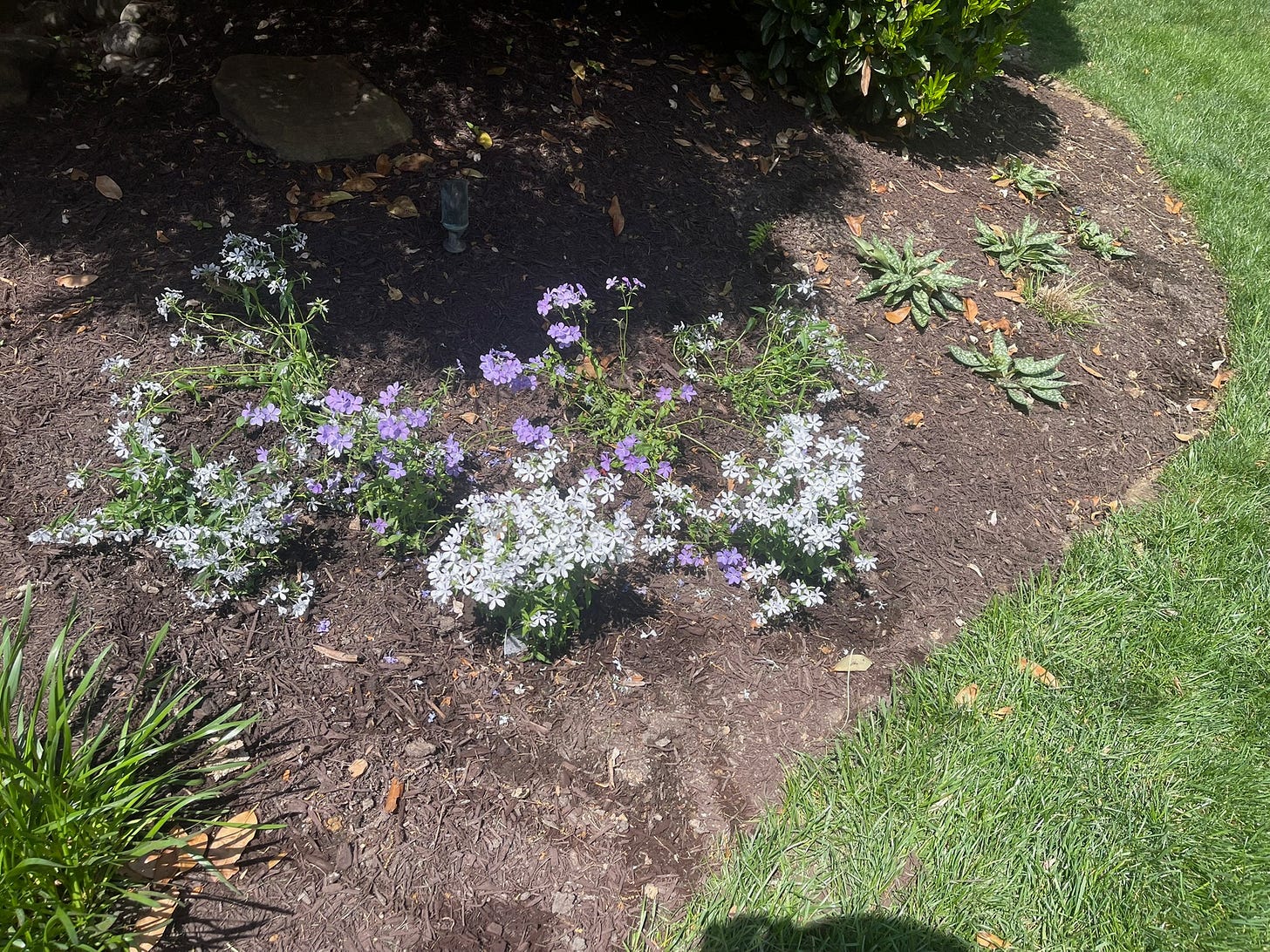
Last week I did a shout-out to my flowering shrubs without even mentioning my flowering trees. My yard backs up to woodlands, (open space, easement, who knows?) and years ago we cut back some scrub trees and planted some grass. We left three beautiful flowering dogwoods that help define the line between the yard and the woods. When all the dogwoods are flowering, it’s spectacular.
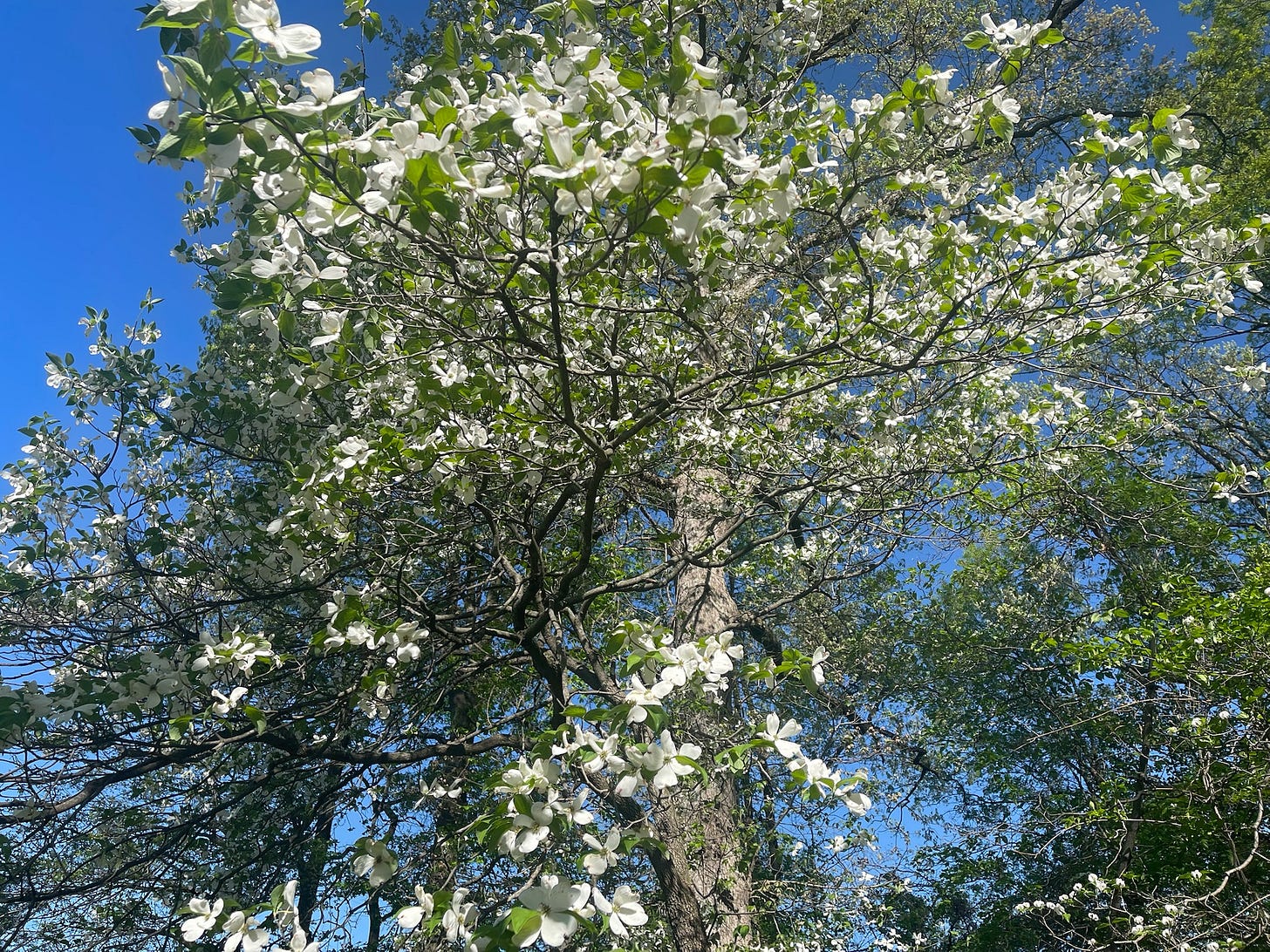
Talk about a good news/bad news situation. The good news is my iris popped this week and the flowers are absolutely beautiful. I’m always surprised at how tall the flowers are. Obviously, the plants are thriving in my back bed, giving me hope the bed is getting enough light for the other sun-loving perennials that live there. The bad news is that Patty, my generous neighbor who shared her seemingly endless bounty of iris with me, thought she was giving me some of her purple plants. We both thought the purple and the yellow would be spectacular together in the bed. To our surprise, all the plants are yellow this year. Patty has already promised I can have some purple once her plants have fully blossomed. UPDATE: Since I wrote this it appears that several purple plants are on the way.
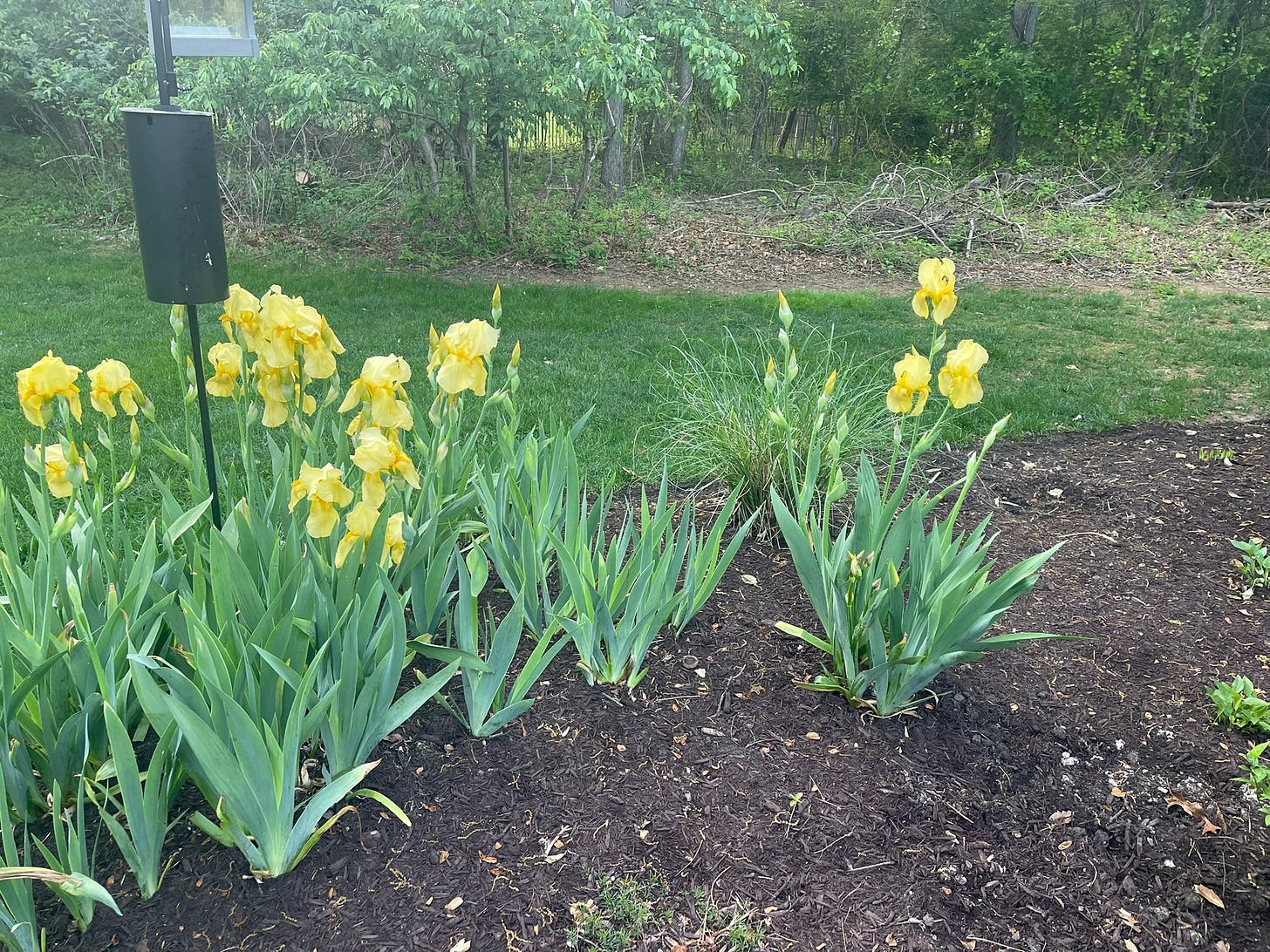
It’s spring, and there is a lot more garden news. Unfortunately, I’m running a little long so it will have to wait for the next newsletter. Thank you so much for your likes and comments. Please feel free to share The Painful Education of a Type A Gardener with friends and enemies, and if you are looking for more Type A content, you can find the entire archive of posts HERE.




